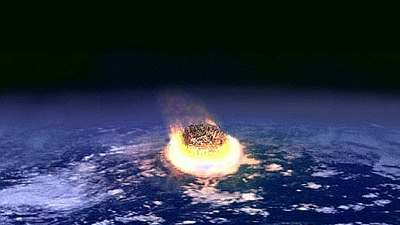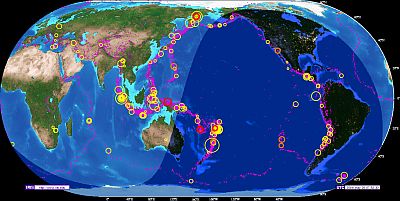``Asteroid Launcher'' allows you to simulate ``What would happen if a meteorite falls here?'' just by clicking on the map

Even if you understand that a collision with a giant meteorite will cause tremendous damage, it is difficult to realize how terrifying a meteorite actually is. Regarding such a meteorite collision, ' Asteroid Launcher ' is a tool that allows you to freely set the size, speed, angle, and falling point of the meteorite and simulate how much damage will be caused by a meteorite collision.
Asteroid Launcher
When you access the official page, it looks like this. A map is displayed from the left to the center, and the tabs on the right side display the type of meteorite, diameter, speed, and impact angle. First, we will simulate a meteorite collision with the default settings of ``Iron Asteroid, diameter 500 m, falling speed 17 km / s, impact angle 45 degrees''.
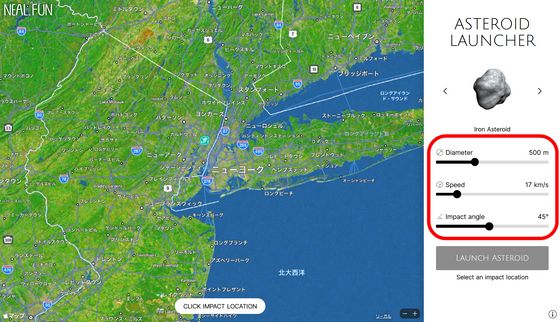
Select the drop point on the map and click 'LAUNCH ATEROID'.
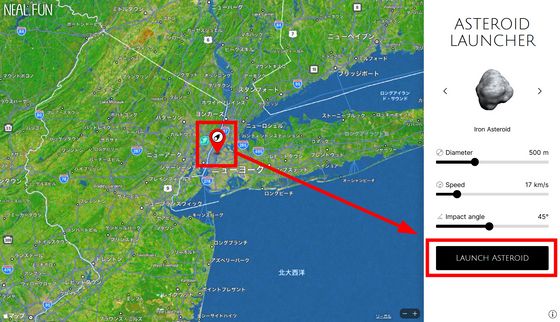
Then, a round light appears on the map and a meteorite collides.
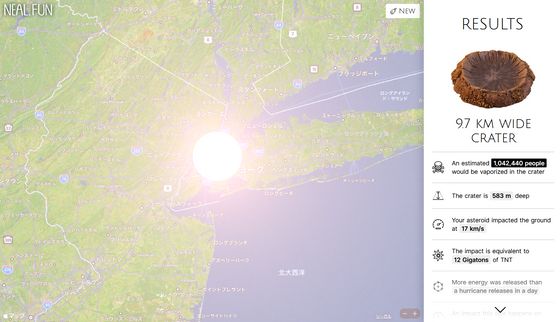
A large crater was left behind.
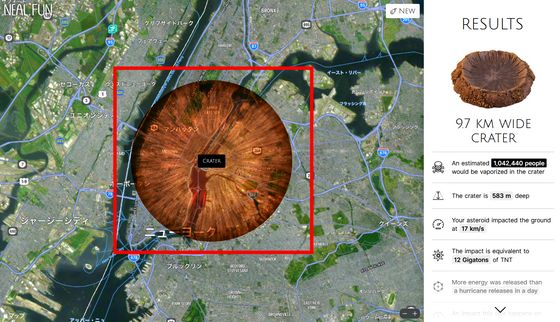
By enlarging or reducing the map, you can see where on the map the boundaries of craters are.

Also, you can know detailed information on the meteorite impact from the tab on the right end. The crater created by this collision was 9.7 km in diameter, and an estimated 1,042,000 people lived inside the crater and evaporated with the collision, and the depth of the crater was 583 m. The energy generated by the collision is comparable to the energy released by a typhoon in a day, and it is said that a meteorite of this size will collide with the earth only once every 166,000 years.

You can see more information by scrolling. The collision caused a fireball with a diameter of 15 km, killing 5,566,506 people, 575,517 people
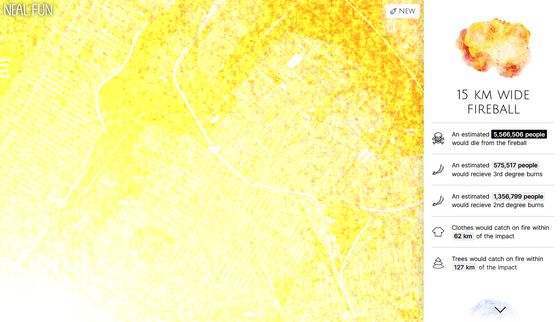
The shock wave caused by the meteorite impact was 241
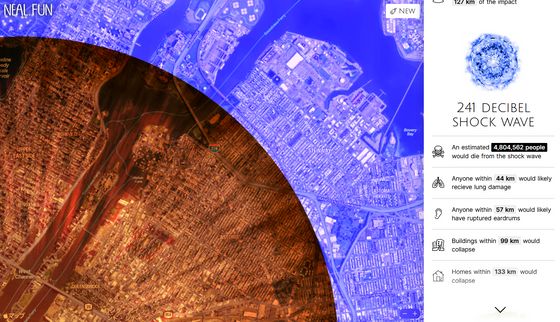
The maximum instantaneous wind speed reached 4 km/s, and it is estimated that 3,043,117 people died due to the gusts. Winds blowing within 30 km were faster than Jupiter's storms, flattening houses within 48 km, winds reaching EF5, the highest level on
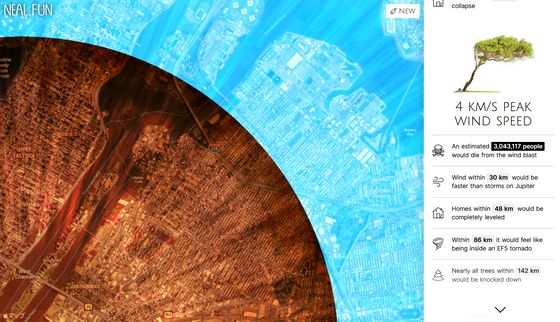
The collision caused a magnitude 7.2 earthquake, killing 41,158 people, and the earthquake's shaking can be felt up to 242 km away.
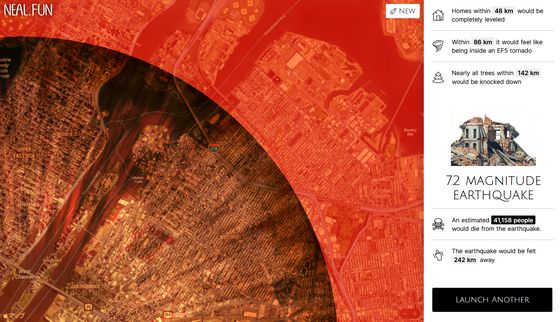
This time, a relatively large meteorite fell in New York, causing tremendous damage, but the damage varies depending on the impact point and the size of the meteorite. If you want to simulate another meteorite fall, click 'LAUNCH ANOTHER' at the bottom of the rightmost tab or 'NEW' at the top right of the map.
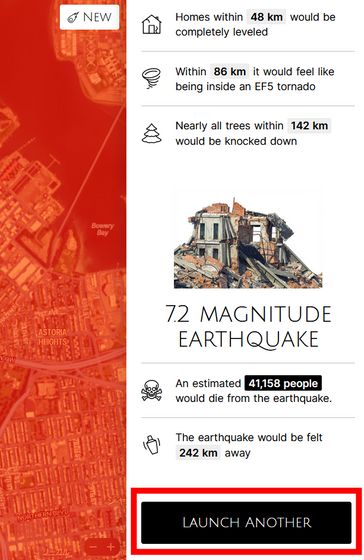
Let's keep the meteorite's diameter, speed, and impact angle the same, but change the falling point to a place where there are likely to be fewer people.
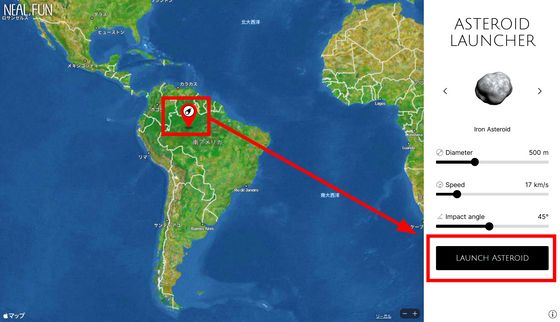
As a result, the number of people who died because they were within the crater area was 55. Of course, this is still a tragic damage, and tens of thousands of people will die from fireballs and shock waves, but you can see that the damage varies greatly depending on the population density of the fall site.
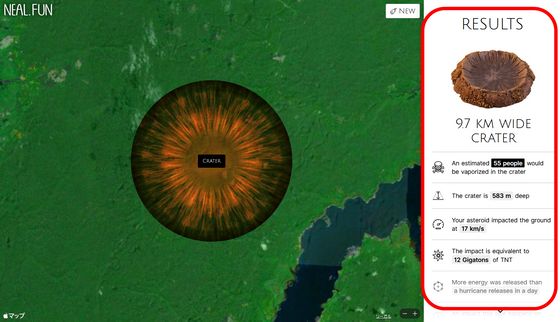
Next, let's set the diameter of the meteorite to 70 m, the falling speed to 10 km/s, and the impact angle to 10 degrees.
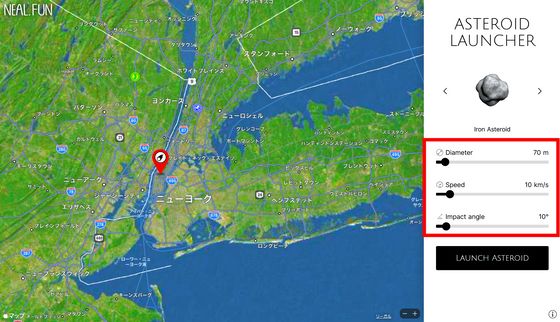
As a result, the meteorite did not collide with the earth's surface, but exploded at a point 11 km above the ground.
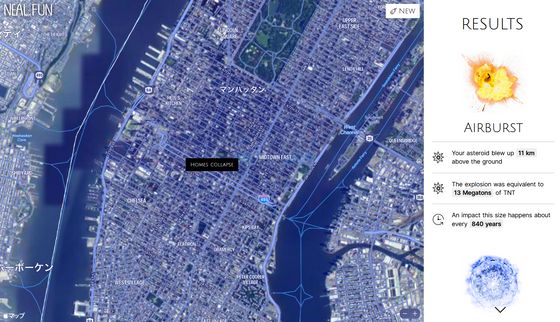
Still, it is estimated that 197 people died from the shock wave and 44,821 people died from the gusts.
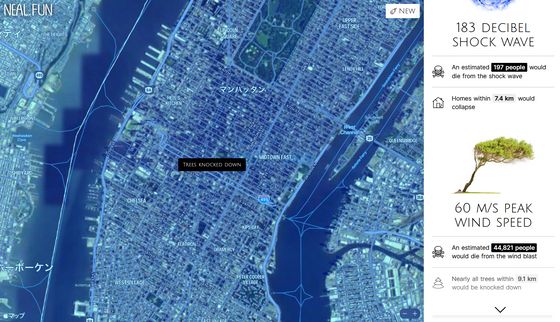
You can also select the type of meteorite from ``Iron Asteroid'', ``Stone Asteroid'', ``Carbon Asteroid'', ``Comet'', ``Gold Asteroid'', etc. Up until now, we have been colliding with iron meteorites, but as a test we will be colliding with rock meteorites under the conditions of ``500 m diameter, falling speed 17 km/s, and impact angle 45 degrees''.

Depending on the type of meteorite, the damage will also vary.
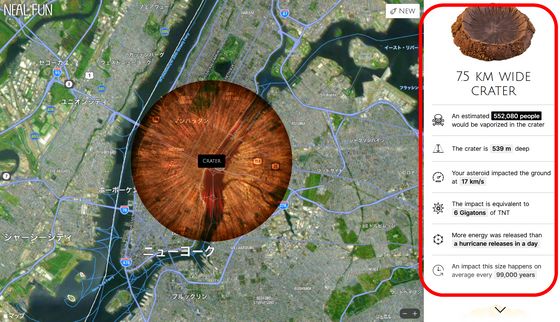
A simulation of the case where a carbonaceous meteorite with a diameter of 150 m, a falling speed of 17 km/s, and an impact angle of 45 degrees falls in Tokyo, Japan looks like this. The diameter of the crater is 1.3 km, and it is estimated that 4,656 people died because they were within the crater area, and a total of more than 700,000 people died due to the shock waves and gusts of wind.
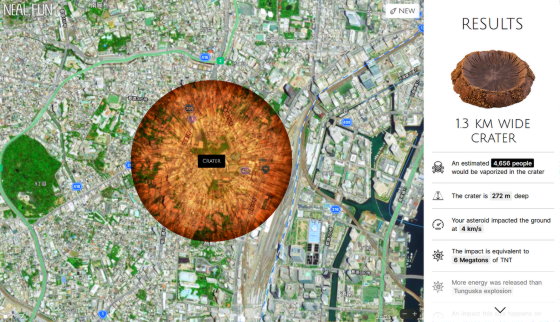
'Asteroid Launcher' was a tool that allows you to vividly experience the threat of meteorites by colliding meteorites under various conditions and comparing the estimated damage.
Related Posts:
in Review, Web Service, Science, , Posted by log1h_ik


